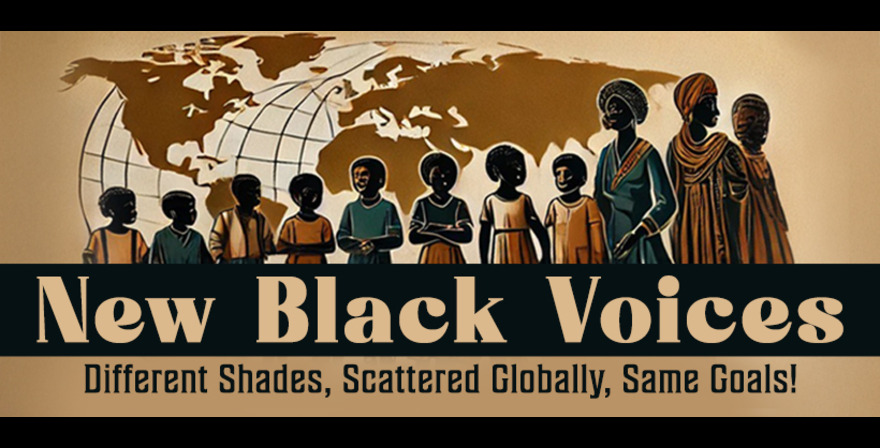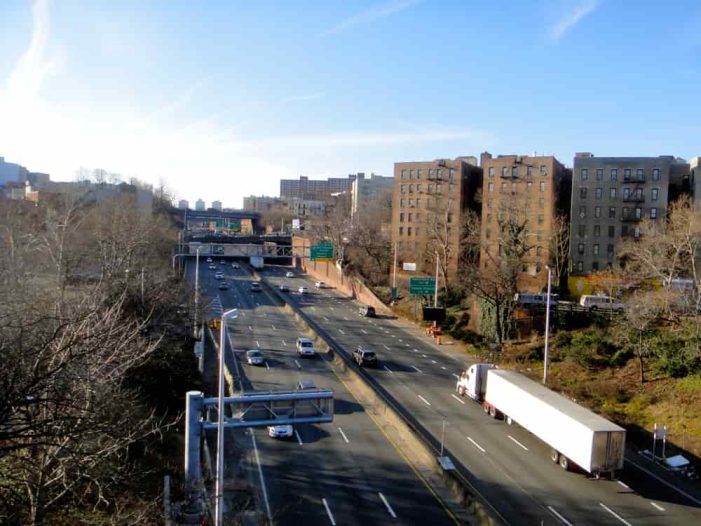Editorial credit: quiggyt4 / Shutterstock.com

By Dr. Ananna Kazi and Dr. Sarah Shidid, City Limits
Much of the media spotlight has focused on the adverse health consequences of climate change, but while well-documented, relatively less attention has been given to the negative health impacts of structural racism.
The effects of systemic racism have made citizens in the Bronx become prisoners of their own environment, affecting their health significantly. Last summer offered an extreme example of the dangers of venturing into open space when wildfires in Canada caused air pollutants in New York City to reach levels detrimental to human well-being.
For people living in the Bronx, this is a daily occurrence that is caused by their proximity to the Cross Bronx Expressway. The constant flow of traffic from the expressway exudes fumes that fill the air with toxins known to trigger and worsen respiratory conditions. It contributes to the unfortunate reality that the Bronx has the highest rate of asthma in the United States. As doctors deeply invested in the Bronx community, we feel compelled to raise our voices regarding the health consequences of the Cross Bronx Expressway, especially with respect to its contribution to asthma rates, and to find solutions.
Designed by urban planner Robert Moses, construction of the 6.2-mile, six-lane highway in the South Bronx destroyed many communities along its way. The Federal Interstate Highway Act of 1956 spearheaded the movement under the guise of connecting major American cities through a national interstate highway system. This gave Moses, who was also the chairman of the New York City Slum Clearance Committee, the green light to “go right through cities and not around them,” which also aided in his vision to “clear the slums.”
Although the aim was to connect communities, over 60,000 residents were displaced—the greatest number for any single infrastructure project in United States history—and it created physical barriers that divided communities. While many white residents fled, numerous Black and brown residents felt trapped due to redlining and housing policies that made relocation difficult. Bronx citizens bore the brunt of daily truck traffic and gas emissions that afflicted the borough’s air quality and led to increased asthma-related emergency department visits and hospitalizations that we still see today.
Research has shown that growing up near highways like the Cross Bronx Expressway is linked to poor lung development, increased asthma incidence, and more frequent asthma attacks. Amongst the pediatric population in the Bronx, asthma rates have been found to be as high as 17 percent, almost three times higher than rates nationally. It is heartbreaking for us to see our patients struggling to breathe, knowing that their environment plays a role in their suffering—a factor beyond their control.
In addition to the effects of the Cross Bronx Expressway, the Bronx, the poorest borough that’s predominantly home to people of color, is at the highest risk for climate-related negative health impacts. This vulnerability is due to factors, such as limited access to air conditioning, poor housing conditions, and significantly lower tree coverage compared to other boroughs and neighborhoods. While there is an increasing emphasis on the social and structural determinants of health in medicine, there remains a lack of education on this subject. This leads our patients to accept their difficulty breathing as their “norm” and often causes them to blame themselves.
One of the first questions we ask patients when they present with an asthma exacerbation episode is what they think their trigger is. If their trigger is something out of their control, medications only serve as band aids rather than solutions. Asthma treatment guidelines can instruct us on how to escalate treatment, but they are of limited benefit if we do not consider the role of the environment and engage in these conversations with our patients.
There is hope on the horizon with the “Cap the Cross Bronx Expressway” initiative, which would build a cover on top of the below-ground level parts of the highway and turn them into parks. The project will also place filters capable of reducing small particulate matter from diesel exhaust within the parks. Covering or “capping” the below-ground sections of the expressway and building parks on the capped portions will reconnect communities and add green space in these areas that need it. Similar capping projects have previously been undertaken in Seattle, Washington, and Boston, Massachusetts, revitalizing the areas, producing vibrant and green pedestrian areas.
An analysis performed by researchers at Columbia University estimated that covering the Cross Bronx Expressway will save both money and lives for people in the Bronx by providing numerous health benefits. It has the potential to improve air quality and reduce harmful gas emissions, reclaim green space, and promote physical activity, such as biking or jogging. This project will give us an opportunity to alleviate the health hazards posed by this highway and undo some of the health inequities that resulted.
Achieving this goal of capping the Cross Bronx Expressway requires collective action and commitment from policymakers, community leaders, and residents. It necessitates prioritizing the health and well-being of our community over short-term convenience. We urge Bronx residents to become involved, voice their concerns, and advocate for solutions that prioritize health and equity.
The Department of Transportation is currently conducting a study to make the capping project successful. It initiated community planning through public engagement in Spring 2023, with meetings planned for late spring/early summer 2024. We encourage everyone to sign up for the DOT’s newsletter and participate in these meetings by visiting the website nyc.gov/crossbronx or emailing crossbronx@dot.nyc.gov.
Let us shift our perspective away from seeing the Cross Bronx Expressway as an unchangeable fate and instead delve into innovative solutions to foster community connections. Together, we can work to improve air quality, reduce environmental injustice, and promote health equity for Bronx residents. We can ensure that the Cap the Cross Bronx Expressway project aligns with the needs and aspirations of our community. It is not just about fixing roads—it is about making sure everyone in our community can breathe easy and live well.
Dr. Ananna Kazi, DO and Dr. Sarah Shidid, MD, are internal medicine resident physicians in the Bronx.
This article was republished from City Limits, an independent, investigative news source.

